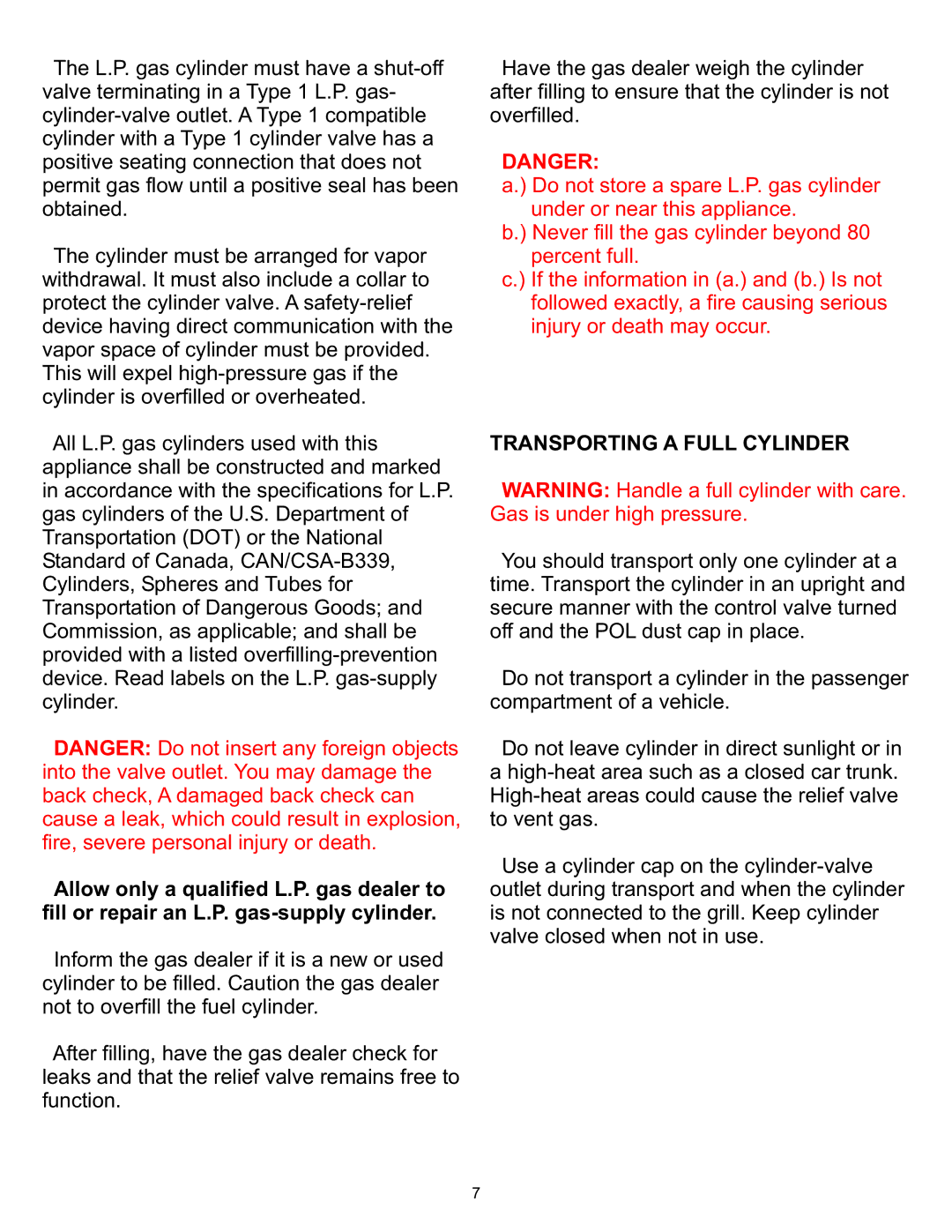
The L.P. gas cylinder must have a
The cylinder must be arranged for vapor withdrawal. It must also include a collar to protect the cylinder valve. A
Have the gas dealer weigh the cylinder after filling to ensure that the cylinder is not overfilled.
DANGER:
a.) Do not store a spare L.P. gas cylinder under or near this appliance.
b.) Never fill the gas cylinder beyond 80 percent full.
c.) If the information in (a.) and (b.) Is not followed exactly, a fire causing serious injury or death may occur.
All L.P. gas cylinders used with this appliance shall be constructed and marked in accordance with the specifications for L.P. gas cylinders of the U.S. Department of Transportation (DOT) or the National Standard of Canada,
DANGER: Do not insert any foreign objects into the valve outlet. You may damage the back check, A damaged back check can cause a leak, which could result in explosion, fire, severe personal injury or death.
Allow only a qualified L.P. gas dealer to fill or repair an L.P.
Inform the gas dealer if it is a new or used cylinder to be filled. Caution the gas dealer not to overfill the fuel cylinder.
After filling, have the gas dealer check for leaks and that the relief valve remains free to function.
TRANSPORTING A FULL CYLINDER
WARNING: Handle a full cylinder with care. Gas is under high pressure.
You should transport only one cylinder at a time. Transport the cylinder in an upright and secure manner with the control valve turned off and the POL dust cap in place.
Do not transport a cylinder in the passenger compartment of a vehicle.
Do not leave cylinder in direct sunlight or in a
Use a cylinder cap on the
7
